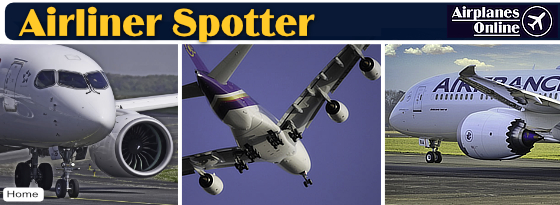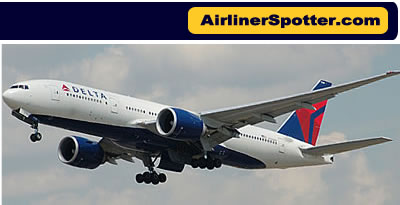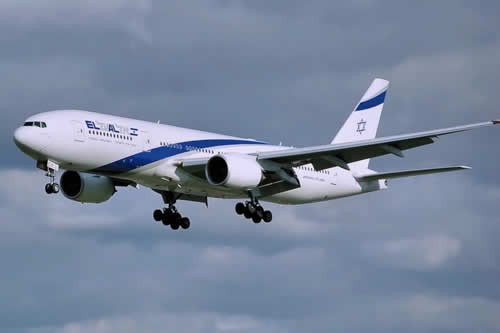The Boeing 777 is a family of long-range wide-body twin-engine jet airliners developed and manufactured by Boeing Commercial Airplanes.
It is the world's largest twinjet and has a typical seating capacity for 314 to 451 passengers, with a range of 5,235 to 9,500 nautical miles (9,695 to 17,594 km).
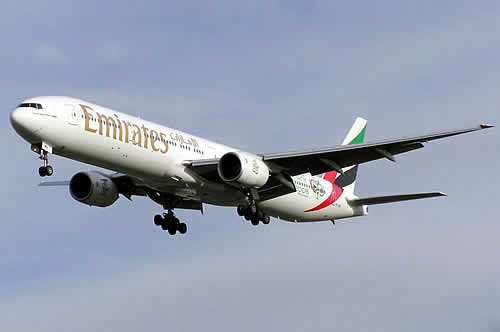 Emirates Boeing 777-31H, Registration Number A6-EMV |
Commonly referred to as the "Triple Seven", its distinguishing features include the largest-diameter turbofan engines of any aircraft, six wheels on each main landing gear, fully circular fuselage cross-section, and a blade-shaped, sawed-off tail cone.
Boeing 777 Background and Development
As Boeing's first fly-by-wire airliner, the 777 has computer-mediated controls. It was also the first commercial aircraft to be designed entirely with computer-aided design.
The 777 first entered commercial service with United Airlines on June 7, 1995. It has received more orders than any other wide-body airliner.
777-200, 777-300 and 777F
The 777, sometimes called the "Worldliner", is currently produced in two fuselage lengths:
- The original 777-200 variant entered commercial service in 1995, followed by the extended-range 777-200ER and long-range 777-200LR. Overall length is 209' 1".
- The stretched 777-300, which is 33.25 ft (10.1 m) longer, followed in 1998. Also, the 777-300ER has been an extremely popular model with world airlines. Overall length is 242' 4".
Boeing has also delivered 180 units of the 777F freighter, based on the 777-200LR. It has a maximum payload of about 225,000 pounds and a range of 4,970 miles.
777 Orders and Deliveries
Total Boeing 777 orders and deliveries are shown in the table below (through January 2020).
| Boeing 777 Model | Orders | Deliveries |
| 777-200 | 88 | 88 |
| 777-200ER | 422 | 422 |
| 777-200LR | 61 | 60 |
| 777-300 | 60 | 60 |
| 777-300ER | 838 | 819 |
| 777F | 232 | 180 |
| 777X | 309 | 0 |
| TOTAL | 2,010 | 1,629 |
| American Airlines Boeing 777 on final approach at the DFW International AIrport (Staff Photo, June, 2019) |
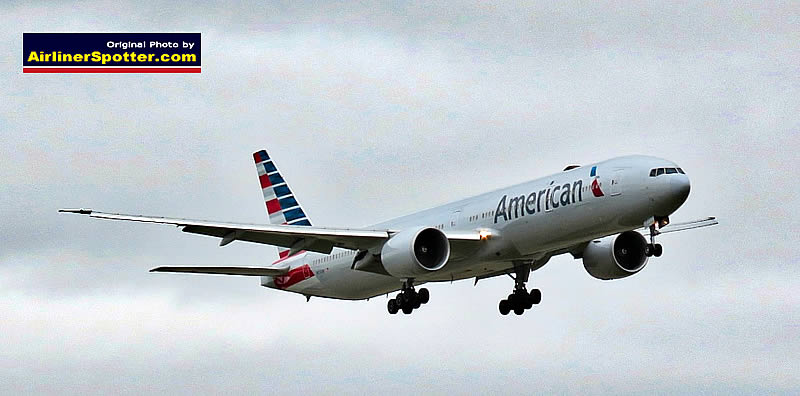 |
Boeing 777X Family: 777-8 and 777-9
Boeing announced the next generation of the 777 in 2013: The 777X.
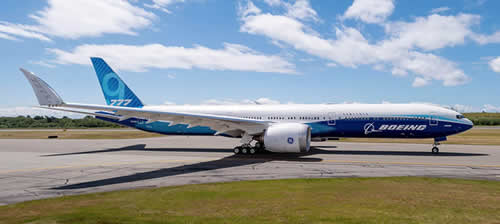 Boeing 777-9 (Courtesy of the Boeing Co) |
It will include two models, the 777-8 and 777-9, and feature improvements using 787 technology, composite wings with folding wingtips, improved GE9X engines, larger windows and more interior comfort for passengers.
The 777-9 will have a fuselage length of 250' 11", exceeding the 250' 2" length of the Boeing 747-8, currently the world's longest airliner.
As of mid-2017, it is reported that Boeing has received firm orders on over 325 of the 777X airliners. First deliveries are anticipated for 2020.
The 777X jetliners will be built at Boeing's Everett plant. Production lines are being modified to continue assembly of the 777-200 and 777-300 while ramping up assembly processes for the 777X.
| New Boeing 777X Completes Successful First Flight on January 25, 2020 |
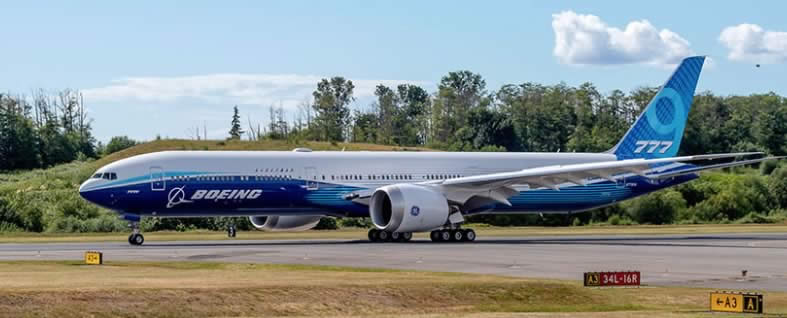 |
Boeing 777 Spotting Tips
A side-by-side comparison of the Boeing 777-200 (top) and Boeing 777-300 (below). The Boeing 777-200 has 4 exit doors, while the 777-300 has 5 doors. Also seen in the chart are other design characteristics of the 777: overly large engines, no winglets, flat APU exhaust at the rear of the fuselage, and a 12-wheel main landing gear configuration. |
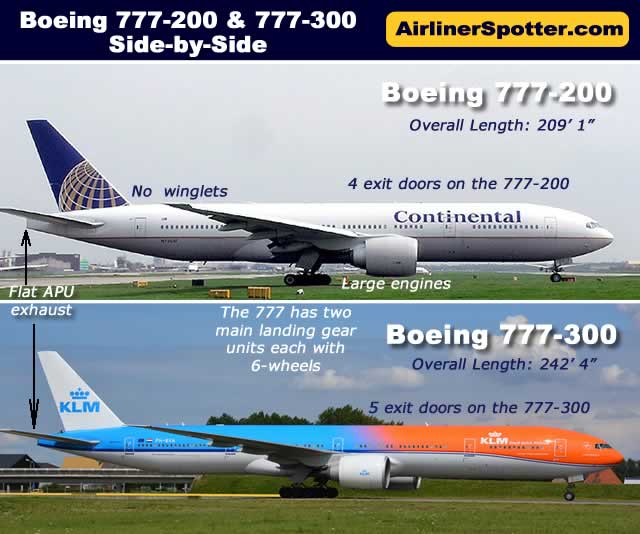 |
| The Boeing 777 undercarriage featuring its dual 6-wheel main landing gear. The Airbus A350-1000 uses a similar configuration. |
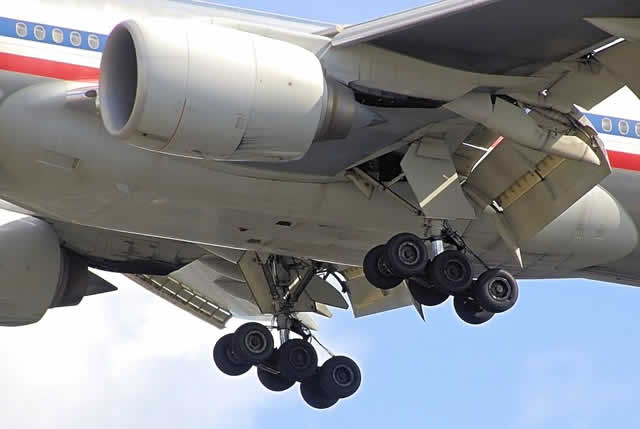 |
| A comparison of the Boeing 777 (top) and Boeing 767 (bottom), both from All Nippon Airlines |
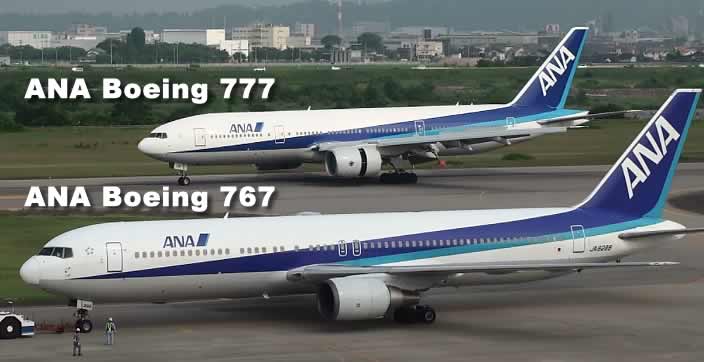 |
Boeing Wide Body Nose ComparisonComparison of the fuselage nose configuration of a Boeing 767 (top) and Boeing 777 (middle), both in British Airways livery. The top "slant" of the fuselage is more flattened on the 777. Also notice the advanced position of the front gear on the 767. The nose of the 787 (bottom) is more sleek and pointed. |
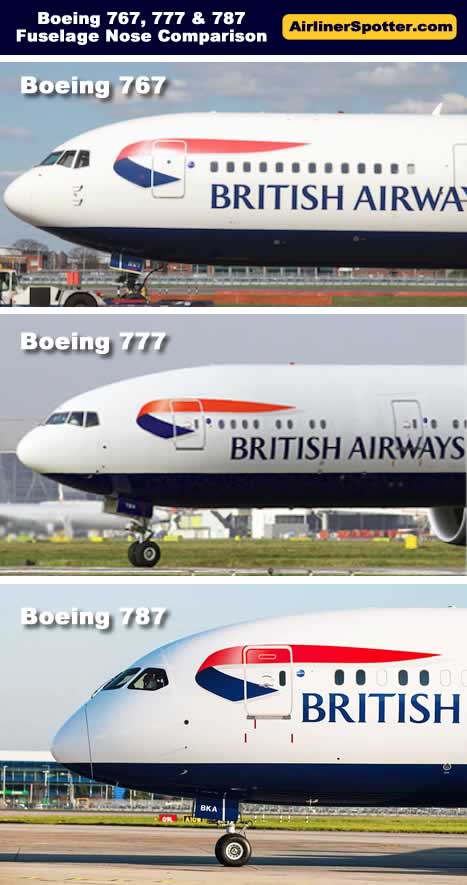 |
| Boeing 777-300 and Airbus A350-1000 Side-by-Side Comparison |
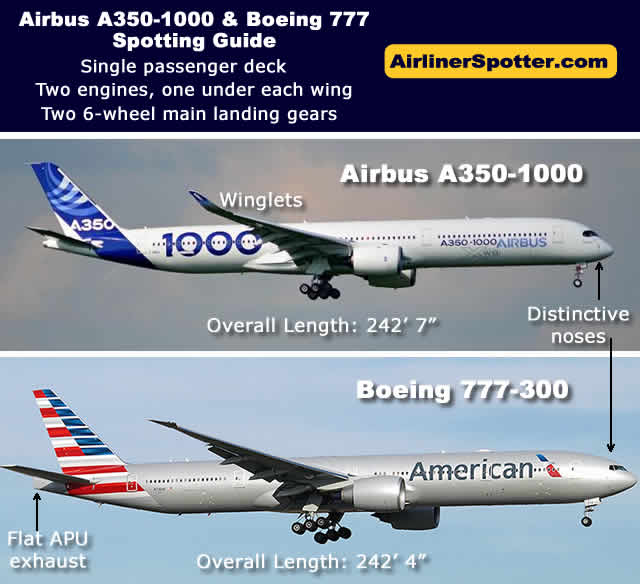 |
Boeing 777-200 Photographs
| American Airlines Boeing 777-200 prior to takeoff at the DFW International AIrport (Staff Photo, June, 2019) |
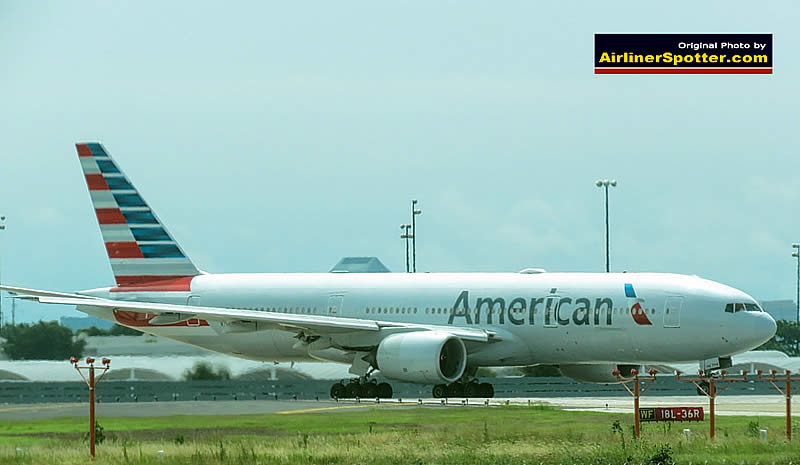 |
| Boeing 777-200 of Continental Airlines |
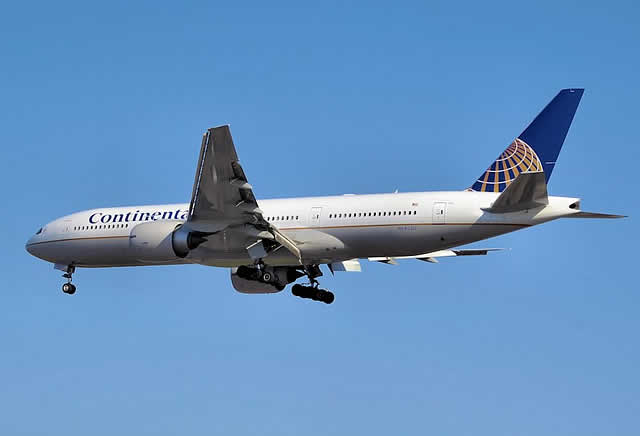 |
| American Airlines Boeing 777-200 |
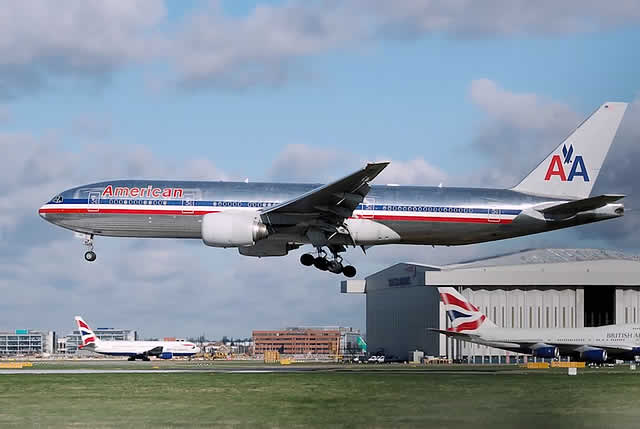 |
| Delta Air Lines Boeing 777-200 |
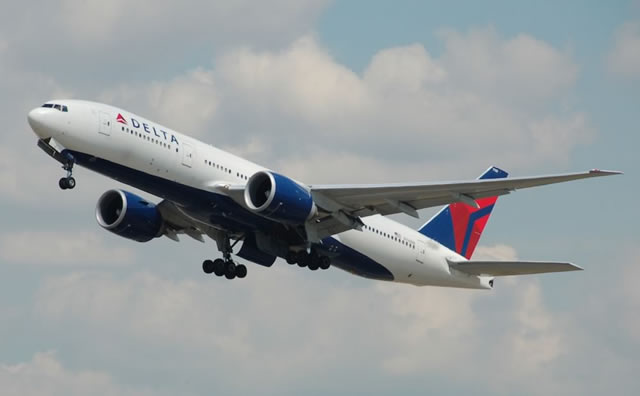 |
El Al Boeing 777-200
|
Boeing 777-300 Photographs
| Korean Air Boeing 777-300ER, Registration HL7203, at the DFW Airport (Staff Photo, June, 2019) |
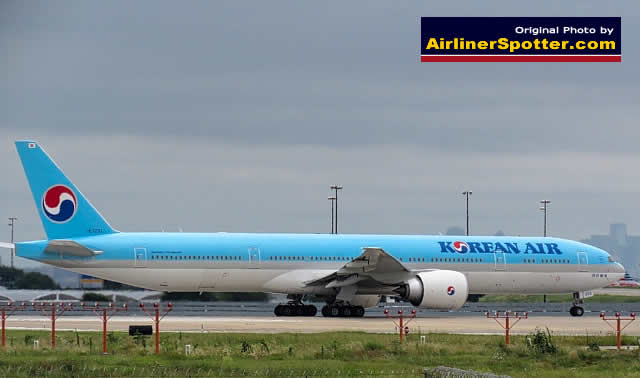 |
| Boeing 777-300 of Eva Air on approach at Los Angeles International Airport (LAX) |
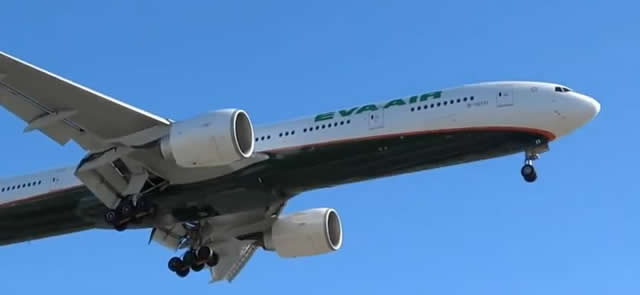 |
Swiss Air Boeing 777-300, Registration HB-JND, msn 44585 (Photo by DELEHELLE Eric) |
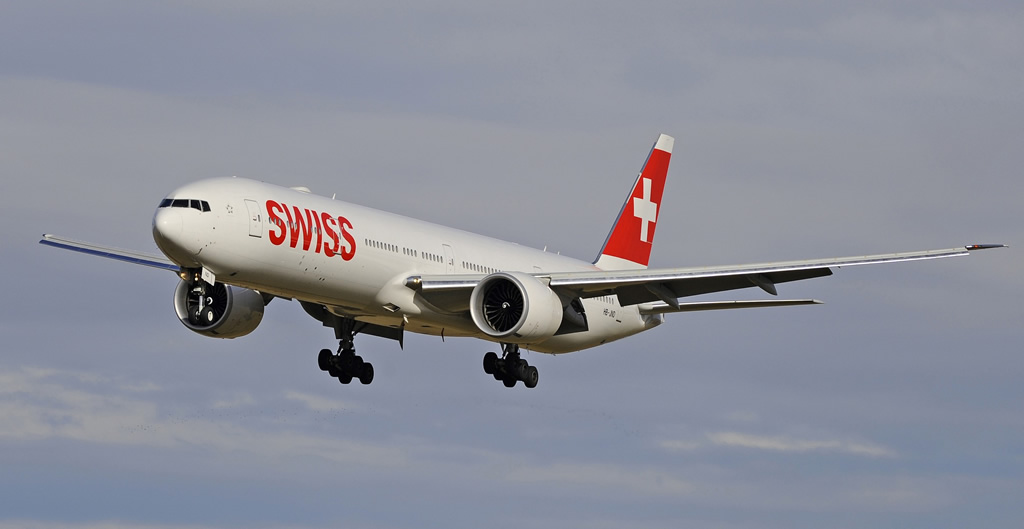 |
| Qatar One World Boeing 777-300 |
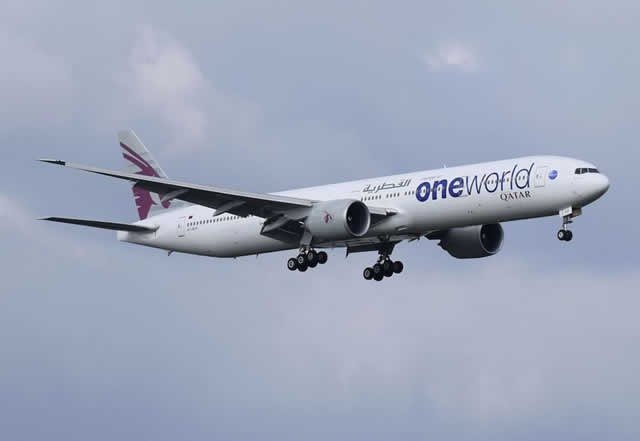 |
| Emirates Boeing 777-300ER Registration A6-EBT at Warsaw Airport |
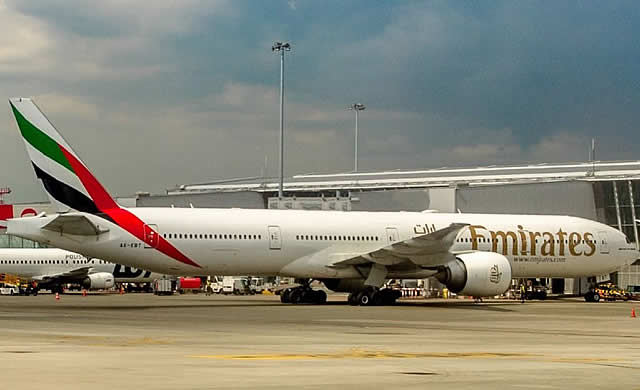 |
Boeing 777 Freighter
| Boeing 777F freighter (photo courtesy of the Boeing Company) |
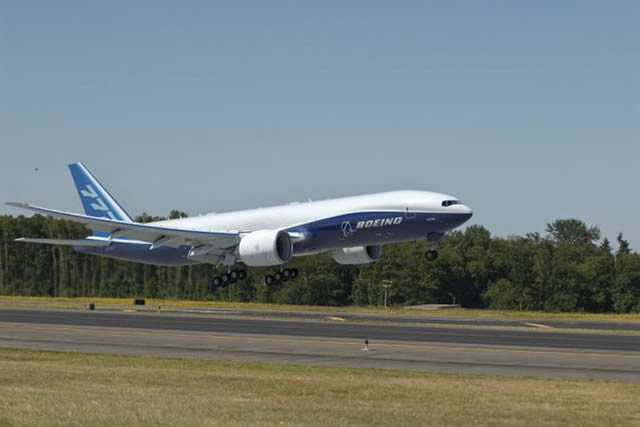 |
